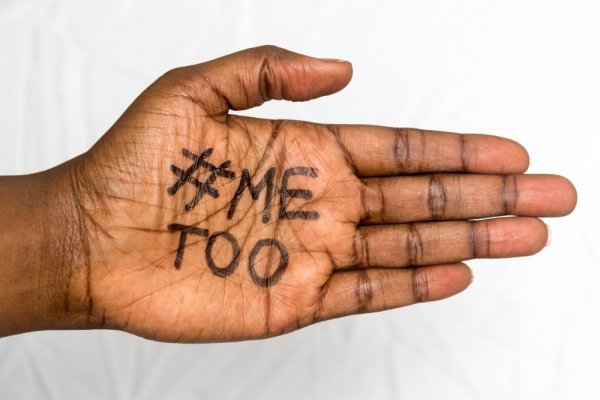Backlash is a negative, hostile or aggressive reaction to a political idea. The term has been applied to civil and race rights. Recently however, it has been prominent in politics, business and the media, as an opposing stance to initiatives designed to advance women’s rights and social status.
History makes it clear that when gains for women are made, conservative forces will rise up to slap them down
History makes it clear that when gains for women are made, conservative forces, which strongly adhere to the idea that the roles of men and women are traditional or natural, will rise up to slap them down. This has the effect of limiting, and at times reversing the progress that has been made.
Backlash includes attempts to discredit arguments about gender equality or the gendered nature of violence. It also supports efforts to preserve existing gender norms and hierarchies. In organisations, backlash undermines attempts to eradicate sexual harassment and other forms of gender based violence.
Backlash as anti-feminism
In the early twentieth century, anti-suffragists fought to protect the precious notion of womanhood and treasured feminine virtues from further modernisation. More recently, those who believe in equal representation in politics have been dismissed as ‘vagina voters’. In a response to a pro-feminism speech by Australian Labor Senator Penny Wong, several women who identified as being humanist and antifeminist argued that feminism is a discriminatory ideology that continues to portray women as victims.
The Tumblr site Women Against Feminism depicts thousands of images of anti-feminist messages written on placards held by (mostly) young women. Aligned with notions of neoliberalism, messages propose women’s disadvantage is not structurally created or solved, but instead resides with the individual. The website promotes three primary messages. First, that feminism is surveillance of the body. Second, that feminism is a war started by women which demonises, excludes and bullies men. And third, that feminism is disempowering, compromising individual women’s ability to speak and act for themselves.
Canadian sociologists Melissa Blais and Francis Dupuis-Deri write that anti-feminist thought has primarily taken the form of an extreme version of masculinism, in which “men are in crisis because of the feminisation of society”. Similarly, the encyclopaedia of Men and Masculinities suggests antifeminists advance their cause as a means of saving masculinity from pollution and invasion.
Thousands of narratives have revealed the true extent of gender-based violence in organisations and institutions worldwide
Conversely, social media, and most importantly the #MeToo movement, has provided a means through which to bypass the traditional gatekeepers of the mainstream media. Thousands of narratives have revealed the true extent of gender-based violence in organisations and institutions worldwide. Yet the appointment of Brett Kavanagh to the US Supreme Court, despite the extraordinary testimony of Professor Christine Blasey Ford and accusations by other alleged victims, suggests we still have a way to go to challenge power and privilege in ways that dismantle patriarchal systems.

Organisational backlash
In organisations too, backlash has been a conspicuous feature of attempts to reverse entrenched gender inequality, including sexual and sex-based harassment, sex discrimination, and predatory behaviour. Research and national consultation undertaken by OurWatch, in partnership with Australia’s National Research Organisation for Women’s Safety (ANROWS) and VicHealth, found evidence of hostility towards gender equality initiatives and reforms where existing or expected power differentials and hierarchies are challenged.
Backlash has also been evident in Victoria Police in response to recommendations arising from a comprehensive review and subsequent audit of the organisation. Examples from survey and interview responses included denials of the extent of the problem, claims that resources would be better diverted elsewhere, and that measures to improve gender equality disadvantage men or undermine organisational goals.
A particularly potent example of backlash recently played out through a succession of legal challenges in Victoria. The United Firefighters Union successfully prevented the release of a report into systemic bullying and sexual harassment in the state’s fire fighting services. The decision was based on the view that the investigation was illegitimate because it had been requested by the Victorian government rather than the Metropolitan Fire Brigade (MFB) or the Country Fire Authority (CFA). The union’s additional claim that the review was flawed on methodological grounds was not upheld.
However, other studies revealing the extent of sexual harassment have been subject to significant backlash on the basis of research methods.
A new form of backlash?
While most examples of backlash are ideologically driven, attacking the principles of feminism and gender equality more broadly, recently we’ve seen a new twist on the theme. Reminiscent of climate change deniers who for decades have challenged the science that sits behind predictions of global warming, the methods utilised in Australian research to estimate the prevalence and nature of sexual harassment and sexual assault has recently come under fire.
Journalist Ean Higgins in The Australian raised questions about whether the 10 per cent response rate in a survey by the Australian Human Rights Commission (AHRC) of sexual harassment and sexual assault in Australian universities constituted a ‘representative sample’ that could yield accurate results.
Any woman who has experienced “inappropriate staring and leering”, especially if it occurs repeatedly or is associated with other intimidating behaviour, will understand how profoundly unsettling it can be
Andrew Bolt in the Herald Sun went further. He referred to the study’s findings as a ‘hoax’, a ‘fraud’, and a ‘disgrace’, suggesting that the ‘results could be exaggerated as much as tenfold’ and that the AHRC inflated the statistics to “paint universities as cesspits of rape and sexual predators”. The article revealed both methodological ignorance in suggesting that response rates are directly equivalent to response bias, and an obvious (and perhaps deliberate) misunderstanding of the impacts of supposedly “trivial” or “accidental” forms of sexual harassment. Any woman who has experienced “inappropriate staring and leering”, especially if it occurs repeatedly or is associated with other intimidating behaviour, will understand how profoundly unsettling it can be.
Bettina Arndt took a different view of the universities study in the Weekend Australian. She suggested that although the survey was “cooked”, and the figures were a “con” and “a hoax”, the findings were in fact “a rare good news story”. This is because the respondents were not in fact rape victims, but rather accusers whose stories have never been tested in court. She further suggested that the police and courts, not universities, should deal with sexual harassment and that the problem of date rape would be largely solved if only women would recognise dangerous situations and resist sexual coercion.

Lessons from backlash
These examples of backlash offer some important lessons. In organisations and other institutions, some will feel that there is no value in a more diverse workforce and that measures to address entrenched gender inequality are unfair and a form of ‘reverse discrimination’. A comprehensive employee engagement process is needed to ensure women are not targeted or ostracised during the transition. Reviews and surveys should be well designed and administered so their findings can withstand scrutiny. The benefits of achieving gender equality for both men and women need to be reinforced. Inevitably, however, measures that challenge the status quo bring with them opposition and resistance. Anticipating and planning to address backlash is an important part of the change process.
This article was first published on LSE Business Review, and has been reproduced here under the Creative Commons licence CC BY-NC-ND 2.0. Read the original here.




